Diabetes mellitus is quite a serious disease, to which, according to statistics, almost one in four people is susceptible. Since the number of patients today exceeds the mark of 350 million people, the diet of diabetes mellitus is carefully studied, which, according to experts, should be followed not only by patients, but also by people. predisposed to the development of the disease.
Excess weight, genetic predisposition or diseases of the stomach can lead to a sudden stop in the production of insulin and other unpleasant manifestations, and adherence to a diet will become a necessary measure to maintain a normal state.
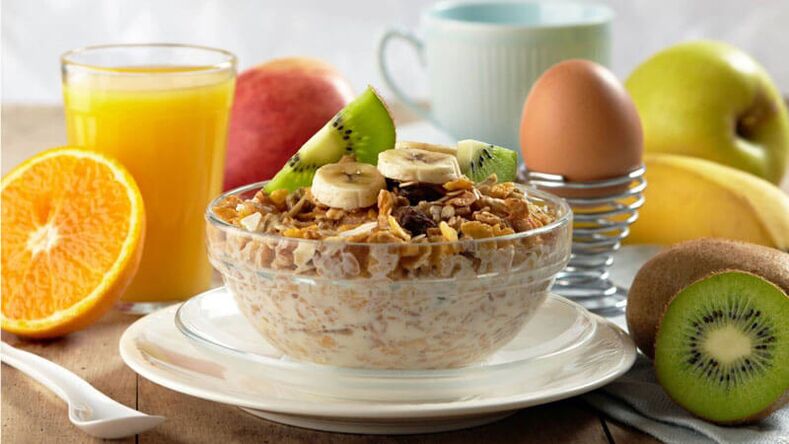
Features of nutrition in diabetes mellitus
The diet for diabetes can vary widely depending on the type of disease. As a rule, there are 2 main types of diabetes mellitus, where there are several forms and rules of nutrition, which are due to the causes of metabolic disorders and the conversion of sugar to glucose.
But each type of disease requires compliance with general eating habits.

Basic Diabetes Nutritional Guidelines
Nutrition for diabetes should be carried out in strict accordance with the basic rules. Thus, for both types of disease, there are the following aspects in the diet:
- The diet should contain proteins, fats and carbohydrates in a balanced ratio to the presence of the disease.
- The number of meals should be slightly increased. So you should eat every 3-4 hours in small portions, dishes for diabetics should be low in calories.
- The calorie content of food and dishes should be carefully calculated - it should not exceed the daily energy consumption. Otherwise, the likelihood of weight gain increases, which in diabetes is fraught with complications.
- Almost all the diets of patients with the presented disease are based on the foundations of a correct and balanced diet. You should include vegetables and fruits, carbohydrates and proteins in the diet, not neglect fats and amino acids.
It should be noted that each patient should consult their healthcare professional on nutritional bases for their specific case. It is not recommended to follow a specific diet, even if it is intended for people with diabetes, without consulting a doctor.
The attending physician should calculate the calorie content of the patient and make certain changes based on the individual characteristics of the organism.
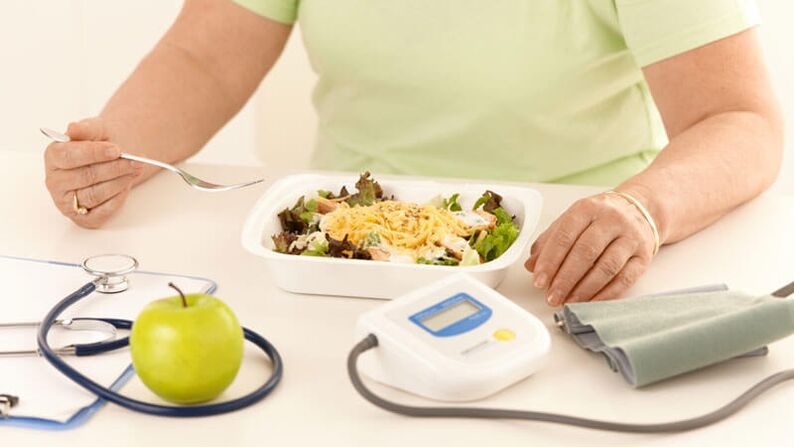
Type 1 diabetes and diet
As strange as it may sound, the diet for type 1 diabetes is based on the correct administration of insulin, so here you have to take into account the use of foods that significantly increase blood sugar.
It turns out that for these patients, nutrition does not require any restrictions, it is enough to carry out correct accounting and rapid administration of insulin into the blood. The following principles and rules for administering insulin are present here:
- Foods that do not contain a lot of carbohydrates in their composition should not be taken into account. For example, meat and fish, eggs and cheese, cottage cheese and butter can be consumed in reasonable amounts, but their consumption should not be reduced or eliminated.
- Only products containing carbohydrates can be counted - these are flour and confectionery products, as well as plant products and liquid dairy products.
Insulin should be given based on the amount of food consumed. You also need to adjust to food intake in time. Here you should use the following principles and rules for administering insulin:
- if the treatment is carried out with short-acting insulin, its introduction takes place 20 minutes before meals;
- if the treatment is carried out with insulin of medium duration of action, its introduction takes place 40 minutes before a meal;
- when using the combined type of insulin, it is administered according to the scheme 20 minutes before breakfast, every 3 hours during the day and half an hour before a full dinner.
The insulin dose should be calculated based on the amount of food consumed. The calculation is done by calculating units of bread (XE).
The unit is a 25 g piece of bread (10-12 g of carbohydrate), which increases a person's blood sugar by 1. 8 mmol / L.
The attending physician can tell you exactly about the stones. In addition, for an accurate calculation of the insulin dose, you need to study the table that shows the indicators of the carbohydrate content of each product.

Type 2 diabetes and diet
The diet for type 2 diabetes is very different from the type 1 diet. Here it is worth not only to take into account the products that are allowed for consumption, but also to carefully monitor the calorie content of the daily diet. Here are the following indicators:
- the normal daily caloric content should be between 1600 and 2500 kcal, depending on the patient's weight and energy consumption;
- in the presence of excess weight, the calorie content necessarily decreases to 1300-1500 kcal;
- if there is a lot of excess weight, the attending physician can reduce the calorie content to 1000 kcal per day;
- there are times when the excess weight significantly exceeds the norm, and the daily calorie content is reduced to 600-900 kcal.
The calorie content of food should be calculated by the attending physician, since not only indicators of a person's weight are taken into account, but also the presence of diseases such as cardiac arrhythmias, severe chronic diseases, gout andmental disorders.
The diet of type 2 diabetics is as follows:
- Carbohydrates in the total daily diet should not exceed 55%. Preference should be given to products which are saturated with vitamins, minerals and dietary fiber. For example, wholegrain breads, whole grains, legumes and vegetables. As for products containing sugar, they are completely abandoned. Instead of sugar, xylitol or sorbitol is allowed to be consumed at the rate of 0. 5 g per 1 kg of the patient's weight, divided at the same time into 2-3 doses.
- Protein for a patient with type 2 diabetes mellitus is allowed according to the physiological norm of a healthy person - 90 g per day. Preference should be given to lean meat in the form of poultry, lean fish and cottage cheese. The daily intake of protein in the diet is 15-20%.
- 30% of the daily ration contains fat, which comes largely from vegetable oils.
- They consume salt and fatty foods in limited amounts.
Experts advise to take the diet of diabetic patients seriously. It is better to make a menu for each day, for 2-3 days or even a whole week.
It will not be superfluous to present it to the attending physician, who can make adjustments depending on the patient's state of health.

Features of a low-carb diet for type 2 diabetes
As a rule, the majority of patients with type 2 diabetes are overweight, which requires immediate elimination so that a person can more easily tolerate the disease and does not expose the body to sudden and significant "jumps". blood sugar.
So, many experts suggest a low carbohydrate diet for type 2 diabetes. What is it?
Scientists have suggested that it is quite difficult for sick people to adhere to good nutrition and the basics immediately after being diagnosed with their illness.
In addition, the main task here is to lose excess weight, therefore, the patient has to reduce his calorie intake, which is not always possible.
So, a person begins to suffer from sharp drops in blood sugar, which is accompanied by constant hunger. This, according to scientists, can be easily avoided by eating more protein.
Protein foods are great for losing weight. In addition, in diabetes mellitus, protein foods are the safest. This regime is more reminiscent of the "Kremlin" well known to everyone.
But such a diet should be used only with the permission of the attending physician, since the intake of protein in the body in large quantities can be dangerous for health and provoke an exacerbation of chronic diseases.
If the presented diet is followed, it is recommended to take special vitamins for diabetics, which will be prescribed by the attending physician.
Principles and basics of the "Table number 9" diet
Most specialists support not only good nutrition, but also the use of special medical diets.
Thus, especially for patients with the presented disease, a diet has been developed, called "Table # 9", which corresponds to the approved list of all medical nutritional foundations.
It tells exactly how to eat properly with diabetes mellitus, lists the allowed and prohibited foods.
The presented menu is also subdivided into two categories, which correspond to the 1st and 2nd types of the disease. But there are general principles that must be learned and followed in order to maintain normal blood sugar.
Principles of the "Table number 9" diet
The diet presented contains basic principles that must be taken into account without any doubt. These include the following aspects:
- Meals can be taken up to 6 times a day. The main feature is that you need to eat every 3 hours in small portions.
- The diabetic menu is compiled without including fried, spicy and fatty foods.
- You can eat only boiled, baked and baked dishes.
- Diabetic sweets should be replaced with natural products or the addition of sweeteners.
"Table 9" contains a complete list of foods authorized for consumption, rich in vitamins and other useful microelements. You should be careful with fruits with a high content of ascorbic acid, which can be eaten in small amounts during the day.

What can you eat with diabetes
The presented diet clearly tells patients what can be eaten with diabetes mellitus of any type. It is recommended to include these foods in the diet to maintain sugar levels and prevent complications. Authorized products include:
- all products made from whole grain flour and wholemeal flour;
- sausages low in fat and low in fat inclusions;
- all types of fish related to low-fat varieties;
- all types of lean meats;
- green vegetables and green vegetables;
- low-sugar fruits;
- oatmeal, buckwheat and millet are allowed from cereals;
- all low fat dairy products;
- tea, freshly squeezed fruit and vegetable juices allowed, herbal teas are allowed in drinks.
Allowed foods are eaten according to the above rules and characteristics, depending on the type of disease.

What not to eat with diabetes
In the diet "Table number 9" there is a list of foods that are prohibited, they must be consumed with the utmost vigilance and precision. The list of prohibited products includes:
- all types of candy, including high sugar candies (type of jam);
- fatty poultry meat;
- salinity in the form of salted fish, salted canned foods and other pickles;
- fatty, drinkable fermented milk products, for example, baked milk, cream and yoghurt;
- you cannot eat strong meat broths;
- pasta, rice and semolina are prohibited - they increase sugar levels;
- hot spices, seasonings, snacks;
- sweet fruits;
- industrial juices from packaging - they have a high sugar content;
- all alcoholic beverages.
The type of disease in this case does not affect the possibility of consuming prohibited foods. According to experts, even patients with type 1 diabetes should stick to a diet so as not to make the situation worse.
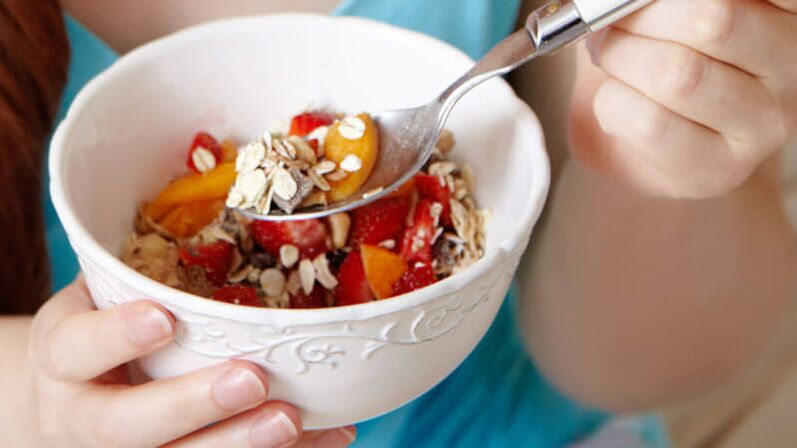
Controversial fruits and vegetables for diabetes
There are several controversial issues in the diet of people with diabetes. By saying that natural products are allowed, including spices, the doctors themselves are starting to restrict the use of patients. What is the reason for this?
Controversial fruits in diabetes
The article has repeatedly mentioned that in the presence of the presented disease, unsweetened fruits are allowed for consumption. They contain little sugar and therefore it will not harm the patient in any way.
However, what fruits can be eaten with diabetes mellitus, even patients with long experience do not know exactly. Needless to say about the ban on the use of grapes, but there are several controversial fruits, including:
- Khaki. Is it possible to eat persimmon with diabetes mellitus, if its taste vaguely resembles sweet. It is this fact that confuses most patients.
Indeed, this fruit contains many vitamins, amino acids, trace elements and sucrose. This fact even allows sick people to use persimmon, since it has a beneficial effect on the body. But this fruit also has a high glycemic index - 70%.
It turns out that you can eat persimmon, but only in limited quantities - 70 g of fruit corresponds to 1 XE. Persimmons for type 2 diabetes are also allowed for consumption, but in limited quantities - no more than one fruit per day.

- Mandarins. Citrus fruits are allowed for diabetics, but in moderation. But is it possible to eat tangerines with diabetes mellitus is a moot point.
The fact is that mandarins contain a large amount of carbohydrates, which leads to a sharp increase in blood sugar in patients with diabetes mellitus. Therefore, experts advise against eating tangerines, even in moderation.

- Watermelon and melon. In late summer, melons ripen, prompting patients to eat watermelon and melon.
These berries have a high glycemic index - 75% and 65%, respectively. This leads to a strong release of sugar in the patient's blood, which causes discomfort and leads to fainting.
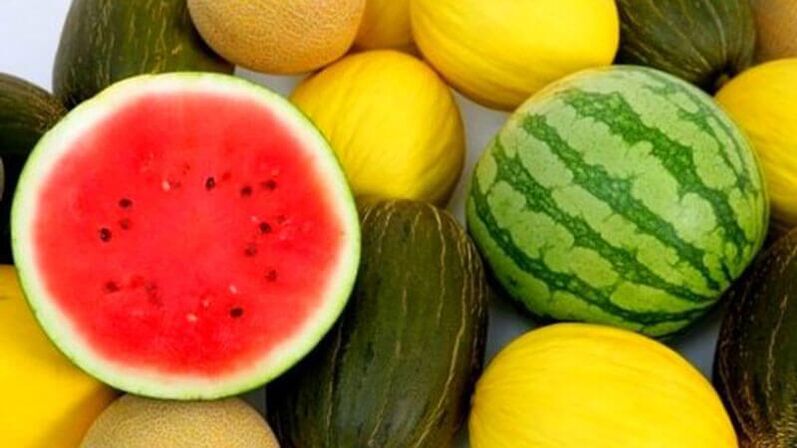
These diabetic products are prohibited or require the use of bread units. Each patient should consult the attending physician, who can calculate the allowable dose of fruit to consume.
Controversial vegetables and roots in diabetes mellitus
The use of vegetables in diabetes mellitus is also controversial.
Many patients do not even realize that vegetables and roots such as potatoes, carrots, beets and tomatoes are subject to the strictest ban.
The listed vegetables contain a large amount of glucose, starch and sugar, which is unacceptable for consumption by patients with diabetes mellitus.
The following products are also subject to consideration:
- Jerusalem artichoke for diabetesRecommended for use by many experts. It contains many amino acids, trace elements and inulin, which is at least 80%. This enzyme is a polysaccharide made up of multiple chains of fructose. It turns out that this root vegetable should not be eaten in unlimited quantities, but it should be included in the diet of diabetes mellitus, since its advantage lies in the prevention of the occurrence of diseases of the gastrointestinal tract.
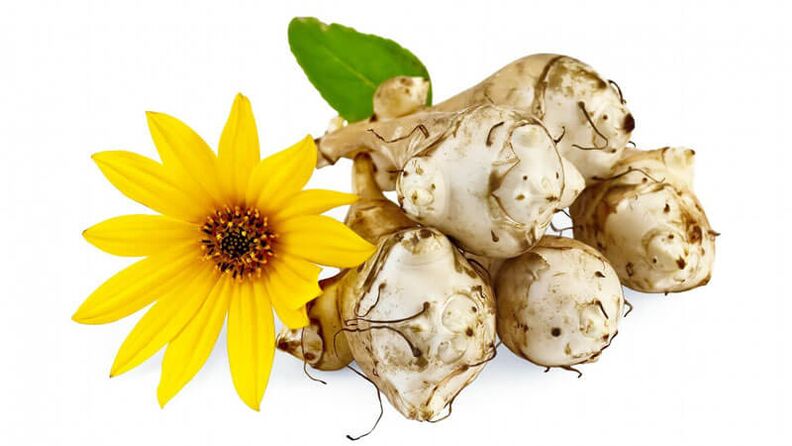
- Pumpkin is a useful vegetable for diabetics. It contains a large amount of protein, carbohydrates, fiber, which has a positive effect on weight control and maintenance, and also contributes to weight loss. As a result, it turns out that pumpkin with type 2 diabetes should definitely be eaten, you just need to carefully monitor the amount of the product in one serving, since it also has a high sugar content.

- There are also many controversies about diabetic sauerkraut, since, as already mentioned above, salting for patients is prohibited. However, this type of salting is allowed for consumption by patients with type 2 diabetes. Cabbage and pickle improve metabolism, leading to gradual weight loss. In addition, there are qualities that are useful for the work of the gastrointestinal tract. Therefore, you can use sauerkraut, but only in small quantities.
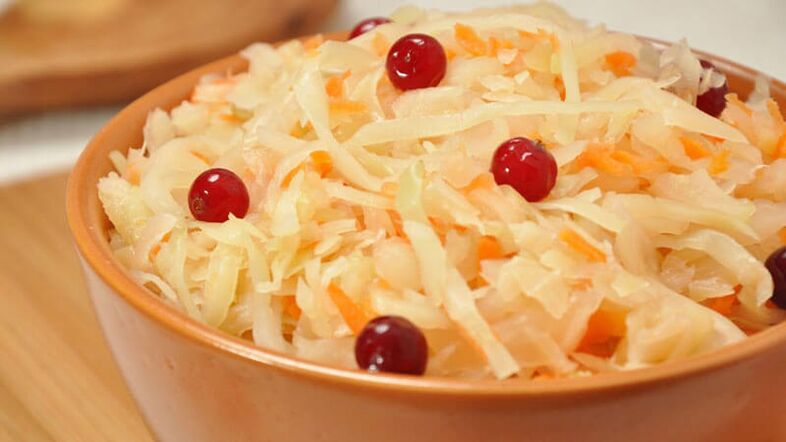
By looking at recipes for diabetics, you can reveal a lot of interesting things in the use of foods, including vegetables and fruits.
Here you need to carefully consider the amount of products required for cooking. If necessary, you need to calculate how much food you are allowed to eat.
Healthy Foods For Diabetes
For diabetics, some natural products only act as a beneficial effect on the functioning of the whole body. So, for example, you cannot completely rule out the consumption of glucose. It is the basis of most of the processes of the human body, which is an integral part.
Based on the need and benefits of using natural products for diabetes mellitus, scientists give their list, which lists all the properties that should be followed when choosing and when developing a diet.

Honey
Most patients refuse to consume honey. It seems to them that it contains a lot of sugar and glucose. It turns out that this natural product contains only 40% sucrose. But it contains the same amount of glucose, which may prohibit the use of honey for diabetes.
Nonetheless, experts say that honey is simply irreplaceable for diabetes. They can replace regular and usual sugar.
One serving of honey for type 2 diabetes should not exceed 1 to 2 tablespoons. Divide it into several stages: add it to baked goods or tea.

Cinnamon
Cinnamon is obligatory for patients with type 2 diabetes. Due to the composition of the spice in the body, the sensitivity of cells to the insulin produced increases, which helps normalize and reduce blood sugar.
In addition, cinnamon in diabetes helps to cleanse blood vessels and internal organs of toxins and toxins, which has a positive effect in preventing thrombophlebitis and other serious diseases.
For a pleasant application of cinnamon, add half a teaspoon to your tea or coffee. You can also sprinkle a little spice on all dishes, according to your tastes and preferences.
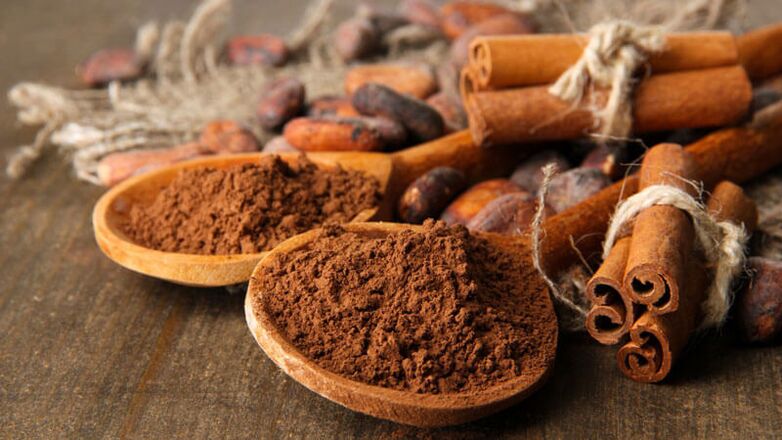
Bay leaf
Bay leaf in diabetes mellitus is necessary for use, but is contraindicated in the presence of serious diseases. So, this natural product should be used to strengthen immunity, speed up metabolism, cleanse the body of toxins and toxins.
On the other hand, bay leaves should not be consumed by people with advanced diabetes, kidney disease, or stomach ulcers.
Bay leaf is mandatory for type 2 diabetes, where the patient is overweight and has high cholesterol.
The use of bay leaves is allowed in the form of dressing for dishes, but it is always more useful to use an infusion. To prepare it, take 10 bay leaves and pour three glasses of boiling water.
Leave the infusion for the infusion for 3-4 hours. Take the composition of 100 g up to three times a day and half an hour before meals. This will help you keep your blood sugar at the correct level.

Stevia
Almost no one knows about the benefits of stevia in diabetes mellitus, but regular use of the infusion helps keep glucose at the required level, strengthens blood vessels, lowers cholesterol and blood pressure, and dramatically improves blood microcirculation.
The collection is easy to buy in pharmacies. It should be infused according to the directions presented and the herbal tea should be drunk hot and in small sips.
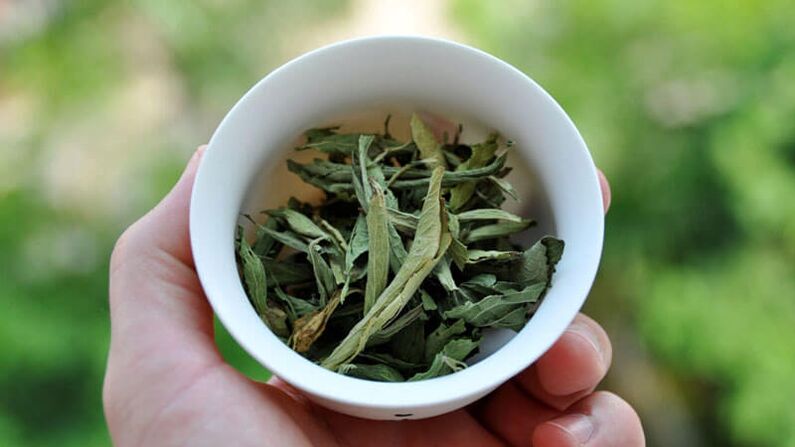
Eat correctly with diabetes mellitus, in accordance with the basic recommendations of specialists. This way, you can keep your blood sugar at a healthy level and feel good in an emergency.




















